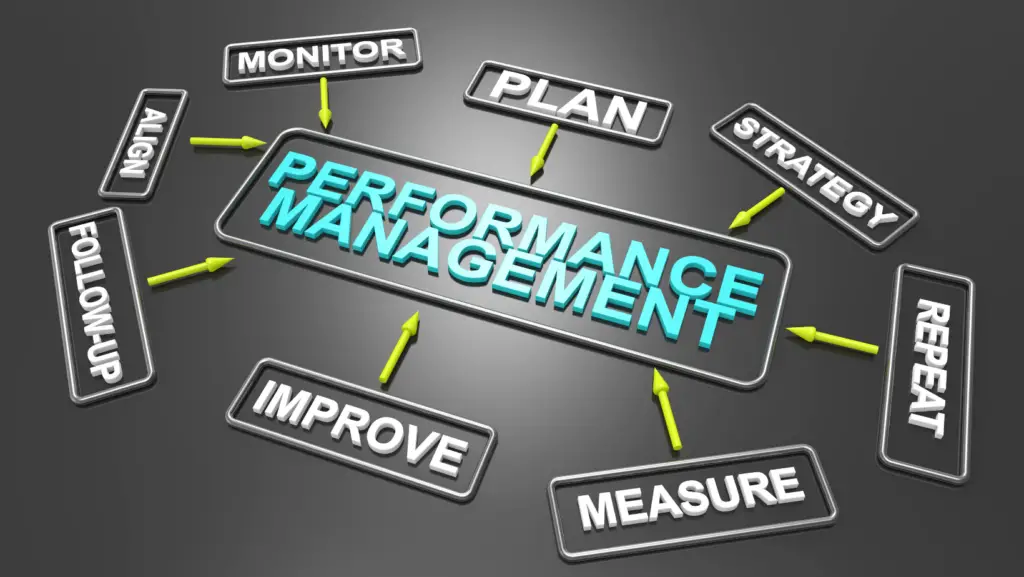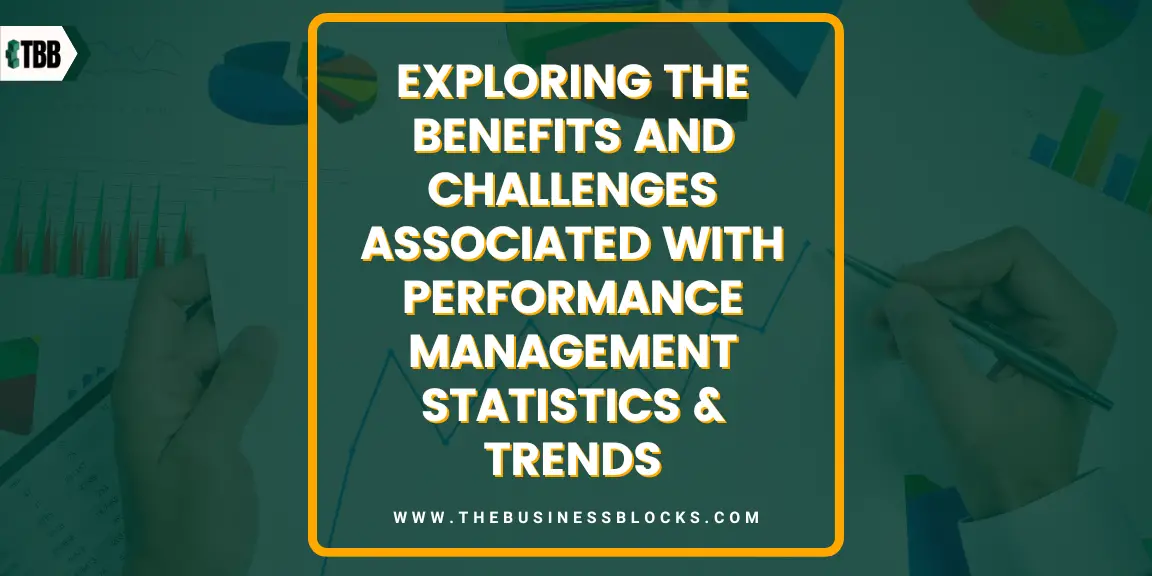Exploring performance management statistics and trends has become indispensable for informed decision-making, maximizing performance potential, and aligning with organizational goals. Moreover, its role in enhancing employee engagement, optimizing talent management, and improving performance evaluation is worth noting.
Let’s explore these ideas and understand the benefits and challenges associated with performance management statistics and trends.
Trying to make sense of the Latest developments in Performance Management?
Discovering the powerful trends and statistics in employee performance management is a key part of staying ahead. With these insights, you can effectively recognize employees’ strengths and weaknesses, determine their development needs for reaching organizational goals, create actionable objectives linked to team success –– and so much more.
With this data-driven approach to optimizing your employee’s productivity, imagine how far you could go as an organization! By understanding what strategies have worked best for other companies operating under similar circumstances, you can apply those same methods within your framework and become even more successful with developing teams and achieving outstanding results using the best performance management practices.
What is Performance Management Statistics & Trends, and How is it Different from Performance Appraisal?

Performance Management Statistics & Trends refer to the collection and analysis of data related to the performance of individuals, teams, or organizations. It systematically measures, monitors, and improves performance to achieve strategic goals and objectives.
Performance Management is a broader concept than Performance Appraisal. While performance appraisal focuses on evaluating an individual’s performance based on predetermined criteria and providing feedback, performance management encompasses a more comprehensive and ongoing process.
Performance Management vs. Performance Appraisal
Let’s go through some key differences between Performance Management and Performance Appraisal:
Scope: Performance Management is a continuous and holistic process that includes goal setting, performance monitoring, feedback, coaching, development, and recognition. It aims to align individual and team performance with organizational objectives. On the other hand, performance appraisal is a specific event or process that evaluates an individual’s performance against established standards.
Timing: Performance Management is an ongoing process that occurs throughout the year. It involves regular check-ins, progress reviews, and feedback discussions. Performance Appraisal is typically conducted annually or at specific intervals to assess an individual’s performance over a defined period.
Purpose: Performance Management aims to improve performance, develop skills, and enhance employee engagement. It focuses on providing continuous feedback, identifying areas for improvement, and supporting employee development. Performance Appraisal, in contrast, primarily focuses on evaluating past performance, determining compensation, and making decisions regarding promotions, transfers, or terminations.
Communication: Performance Management encourages frequent and open communication between managers and employees. It promotes ongoing dialogue, collaboration, and mutual understanding of goals and expectations. Performance Appraisal often involves a one-way feedback process, where managers provide feedback to employees without much opportunity for discussion or input.
Performance Management Statistics & Trends
Organizations collect and analyze various data points related to performance management to gain insights and inform decision-making. These statistics may include employee performance ratings, goal achievement metrics, training and development indicators, employee engagement scores, and other relevant data.
Trends in performance management focus on enhancing the effectiveness and agility of the process. Some emerging trends include:
- Continuous Feedback and Coaching: Moving away from traditional annual reviews, organizations emphasize regular feedback and coaching conversations to provide timely guidance and support.
- Goal Alignment and Cascading: Aligning individual goals with organizational objectives to create a clear line of sight and ensure everyone’s efforts contribute to overall success.
- Employee Empowerment: Encouraging employees to take ownership of their performance and development by providing them with tools, resources, and autonomy.
- Skill-based Performance Management: Shifting from solely focusing on results to assessing and developing specific skills and competencies that align with future needs.
- Technology-enabled Performance Management: Leveraging digital tools and platforms to streamline performance processes, facilitate real-time feedback, and enable data-driven decision-making.
Benefits of Performance Management Statistics & Trends for Organizations

Performance management statistics and trends are essential in assisting firms in measuring, evaluating, and improving the performance of their individuals and teams. Organizations acquire important insights by gathering and analyzing relevant data, which drives informed decision-making, employee engagement, and aligning individual performance with strategic objectives.
Here are some of the benefits of performance management statistics and trends:
- Data-driven Decision Making: Objective insights from performance metrics inform resource allocation, talent development, training, and performance improvement strategies.
- Identifying High Performers: Statistics help recognize top performers, fostering a culture of excellence and motivating others to excel.
- Addressing Performance Gaps: Analysis of trends and areas for improvement enables proactive measures like targeted training, coaching, and performance enhancement plans.
- Aligning Performance with Goals: Performance indicators and progress tracking ensure focus on achieving organizational objectives.
- Enhancing Employee Engagement: Statistics gauge engagement levels and inform initiatives to boost job satisfaction and motivation.
- Supporting Succession Planning and Talent Management: Valuable data aids in identifying high-potential employees and key areas of expertise for talent development and strategic decisions.
- Facilitating Feedback and Coaching: Objective data assist managers in providing constructive feedback, facilitating coaching discussions, and setting performance improvement goals.
- Monitoring and Evaluating Practices: Statistics evaluate the effectiveness of performance management processes, enabling refinement and improved efficiency.
Challenges to Consider When Implementing Performance Management Statistics & Trends
Data quality, metric selection, employee resistance, managerial bias, data privacy, implementation, employee support, and continual monitoring are all hurdles when implementing performance management statistics and trends. Overcoming these obstacles and performance management challenges is critical for reaping the benefits of performance management statistics and trends.
Organizations must verify data integrity, select relevant metrics, handle employee concerns, establish data privacy protocols, manage technical implementation, and review the process regularly. Businesses can effectively employ performance management statistics and trends to achieve performance improvement and align with strategic goals by addressing these obstacles.
Best Practices for Successfully Managing Performance

To successfully manage performance, you must know the fundamentals very well. Get started by following these simple practices:
- Clear expectations: Set specific performance goals and communicate them.
- Timely feedback: Provide constructive feedback and maintain open communication channels.
- Goal alignment: Ensure individual goals align with organizational objectives.
- Measurement: Use relevant metrics to assess performance objectively.
- Continuous development: Foster a culture of ongoing learning and skill enhancement.
- Recognition and rewards: Acknowledge and reward exceptional performance.
- Improvement plans: Support employees through targeted performance improvement plans.
Steps to Develop an Effective Performance System
To effectively manage performance, you must start by defining your organizational goals. Clearly articulate your organization’s strategic objectives and goals to provide a clear direction for performance management.
Next, identify key performance indicators (KPIs) to measure progress towards these goals and enable performance evaluation. Set clear and concise performance expectations for each role, ensuring they align with your objectives. Develop reliable and valid performance evaluation methods, such as self-assessments and supervisor evaluations, to accurately assess employee performance.
Training your managers and employees on the performance management system is crucial, providing comprehensive training to enhance their understanding and skills. Additionally, support employee development through various opportunities like training programs and mentoring to enhance their skills and foster career growth.
Finally, regularly assess and update your performance management system, analyzing its efficacy and maintaining alignment with your organization’s needs.
How to Use Technology and Automation to Improve Performance Management

Let’s understand how you can use technology and automation to improve performance management. Technology can be a game-changer in streamlining processes and enhancing efficiency. Here’s how you can leverage it:
- Performance Tracking: Use performance management software, compensation management software, or tools to track and monitor real-time metrics, automating data collection, visualization, and reporting for accurate evaluation and compensation.
- Goal Management: Employ digital platforms for goal setting and tracking, enabling employees to update goals and managers to review progress, provide feedback, and make necessary adjustments.
- Feedback and Communication: Use digital platforms to facilitate ongoing feedback and communication, enabling timely exchanges and performance-related discussions regardless of location.
- Performance Reviews: Automate performance reviews through online management systems, simplifying the process by allowing electronic evaluations, achievement documentation, and development plan establishment.
- Learning and Development: Implement online training platforms to offer employees on-demand access to materials, courses, and resources, promoting continuous learning and convenient professional growth.
- Analytics and Insights: Leverage data analytics in performance management systems to identify improvement areas, recognize top performers, and make informed decisions.
Identifying Key Performance Indicators (KPIs) for Effective Data Collection
Continuous performance management data collection requires the establishment of relevant key performance indicators (KPIs). KPIs measure progress toward objectives and enable objective evaluation. They must be measurable, actionable, time-bound, achievable, and relevant to your organization’s goals. Identify metrics that accurately reflect employee performance and individual or team success.
The KPIs for effective data collection must:
- Be aligned with organizational objectives and goals.
- Provide meaningful insight into performance.
- Facilitate data-driven decisions.
- Enable comparison of performance across departments or teams.
- Track progress over time.
- Encourage employee growth and development.
- Generate accurate reports for evaluation and improvement analysis.
Annual performance reviews will also help provide a holistic view of employee performance. These reviews should include peer feedback, direct reports, supervisors, and customers. This comprehensive evaluation provides valuable insight into performance and identifies areas for improvement or continued development.
The KPIs collected from analytics can be used to assess and adjust performance management strategies, identify trends in employee productivity, and gain insights into development opportunities. By leveraging data and technology to optimize performance management strategies, organizations can drive better results and maximize the return on their human capital investments.
The Impact of Employee Engagement on Performance Management Data

Employee engagement is closely linked to performance management. Engaged employees are more likely to be:
- Productive.
- Motivated.
- Focused.
They are also more likely to stay with the organization, reducing turnover costs and optimizing productivity. Organizations should prioritize employee meaningful feedback and recognition to sustain employee engagement and drive performance improvement. Regularly solicit feedback from employees. Negative feedback should also be accepted and addressed, as it can reveal improvement areas. Additionally, recognize employee achievements to foster engagement and drive performance.
Frequently Asked Questions About Exploring the Benefits and Challenges Associated with Performance Management Statistics & Trends
Q: What are performance management statistics and trends?
A: Performance management statistics and trends are quantitative data and patterns related to individual and team performance within an organization.
Q: How are performance management statistics different from performance appraisal?
A: Performance management statistics analyze performance data broadly, while performance appraisal evaluates individual performance against goals or expectations.
Q: What are the benefits of using performance management statistics and trends?
A: Some advantages are data-driven decision-making, identifying high performers, resolving performance gaps, aligning with company goals, increasing engagement, and monitoring performance management methods.
Q: How do annual performance management reviews help to provide a holistic view of employees?
A: It helps organizations understand the strengths and weaknesses of individual employees and teams and overall work trends.
Conclusion
While performance management trends may come and go, the benefits of performance reviews are timeless. Understanding the issues surrounding performance review statistics, whether traditional performance reviews or a more progressive approach, is essential to successful performance and can help organizations create efficient systems that minimize the challenges to focus on the benefits.
We hope our blog post convinces you about the effectiveness of performance management statistics and trends. While we have just touched the tip of the iceberg here, we encourage you to explore and dive deeper into performance management strategies.

